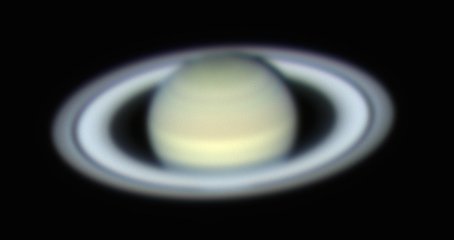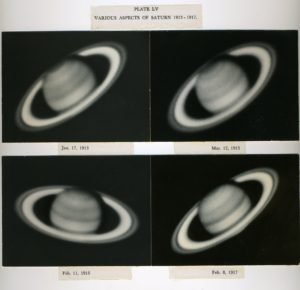
Photo: Sanborn/Neugent/Lowell Discovery Telescope/NSF
By Madison Mooney
Just as Jupiter did on the evening of July 13 and into the morning of July 14, Saturn will appear at its biggest and brightest in the sky when viewed from Earth on Monday, July 20.
What is the opposition of Saturn?
In astronomy terms, opposition refers to the middle point of the best time of year to view a particular planet. This year, the moment of Saturn’s opposition will be at 3 pm AZ/PDT (7 pm ADT, 6 pm EDT, 5 pm CDT, 4 pm MDT). At opposition, the Earth lies between Saturn and the Sun, and so they appear opposite each other in our sky. On the day of opposition, Saturn rises when the Sun sets. It is also the time when the Earth is closest to Saturn in our orbit, making Saturn appear somewhat bigger and brighter in the sky than usual. This close proximity to Earth is called perigee.
How can I view the opposition of Saturn?
You will need a telescope to see Saturn’s rings, but it will be visible to the naked eye as a bright “star” with a yellowish hue. Saturn will appear in the constellation Sagittarius, the centaur. It will be visible for a majority of the night, and it will reach its highest point in the sky around midnight local time. Here in Flagstaff, Arizona, it will be visible between 6:18 pm on July 20 and 4:42 am AZ/PDT on July 21 (convert to your timezone here). Make sure the area that you view in has a clear view of the sky and all unnecessary lights are turned off.

E.C. Slipher, “Photographs of Saturn, 1913-1917,” Lowell Observatory Archives.
We also invite you to join Lowell Observatory educators at the Giovale Open Deck Observatory at 9 pm AZ/PT on Monday, July 20, 2020, for a live stream of Saturn at its biggest and brightest. We’ll also show views of much fainter Pluto, which had its own opposition at 7:17pm AZ/PDT on July 15. Between views of Saturn and Pluto, we’ll conduct an Interactive Stargazing session, showcasing some celestial objects and then letting viewers choose which objects to see via YouTube’s chat function.